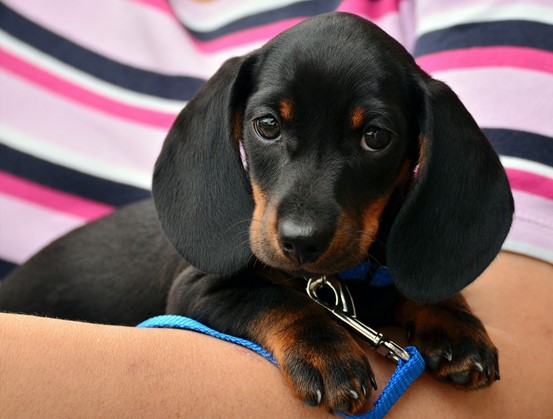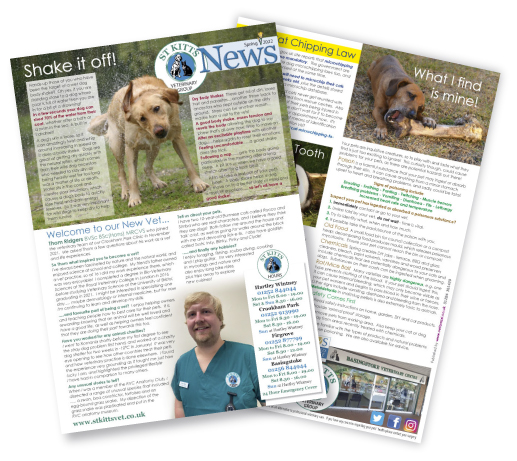
For all the latest practice news and health information, check out our newsletter with the link below!

February is Dental Awareness Month!
While we all believe that we do our best to keep our pets as healthy as we can, many owners underestimate the importance of dental care. Problems are often only noticed when they reach a late stage, such as severe bad breath or discomfort that’s become bad enough to put a pet off their food.
Why Is Pet Dental Health Important?
Dental disease is very common, with up to 80 per cent of dogs and 70 per cent of cats over the age of three suffering from poor oral health. This is significant for more than just cosmetic reasons. Studies have shown a direct link between poor oral health and disease of the heart, brain and kidneys.
The good news is research has demonstrated that dogs with healthy, clean teeth live longer and oral disease can be largely avoided by having a good home care routine in place.
Brushing your pets’ teeth is the best way of keeping teeth clean and free from disease. Brushing at least three times a week but ideally once a day, will help to remove plaque and build up of tartar.
I’ve Never Brushed My Pets’ Teeth Before – What do I do?
It’s just like any other form of training. Starting when your pet is young is often easier but regardless of your pets’ age, if you are planning to introduce a new dental hygiene routine, it’s best to approach it slowly.
Step 1
Start to regularly rub your pets face with your fingers and hands. When they become comfortable with this – if they aren’t already, start to very gently hold their mouths shut for a short period of time. This is done my placing your fingers on top of the muzzle and your thumb under the lower jaw.
Work towards your pet being comfortable to allow you to do this for 30 seconds, remembering to reward their positive behaviour afterwards.
Step 2
Now that you are able to gently close the mouth, you can progress to a finger brush.
You MUST use a toothpaste designed for pets as some of the ingredients in human toothpaste can be toxic to animals.
Start by applying a small amount of toothpaste to your fingertip or finger brush and very gently slide your finger under the lips to rub the paste onto the teeth. The incisors (small teeth at the front) can be very sensitive, so leave these until last when your pet is accustomed to the sensation.
Step 3
Once your pet is used to finger brushing, you can progress on to a toothbrush. One specifically designed for dogs or cats Is best.
Use the toothbrush in exactly the same way as you did previously with your finger or the finger toothbrush. Don’t worry if you see a small amount of blood on the toothbrush to begin – it is perfectly normal and should stop if you continue to brush the teeth regularly. If it continues more than a few weeks, consult a vet. Keep brushing session’s short, no more than two minutes.
What Else Can I Do For My Pets’ Teeth?
Dental Chews – Dental chews are a great way to help keep teeth clean, especially the hard to reach back ones. It’s important to choose those specifically designed to gently remove plaque. These should be used in addition to regular brushing not instead of, as chews alone are not capable of maintaining long-term oral health.
Specialist Diets – Some brands of pet food offer a range that are specifically designed to be kind to your pet’s teeth and can be used in conjunction with brushing. The biscuit size, shape and texture is formulated to provide an increased abrasive action.
If you have concerns over or would like further advice about your pets’ dental health, please don’t hesitate to call us:
St Kitts Veterinary Centre: 01252 844044
Basingstoke Veterinary Centre: 01256 844944
Crookham Park Veterinary Centre: 01252 913990
Firgrove Veterinary Centre: 01252 877799
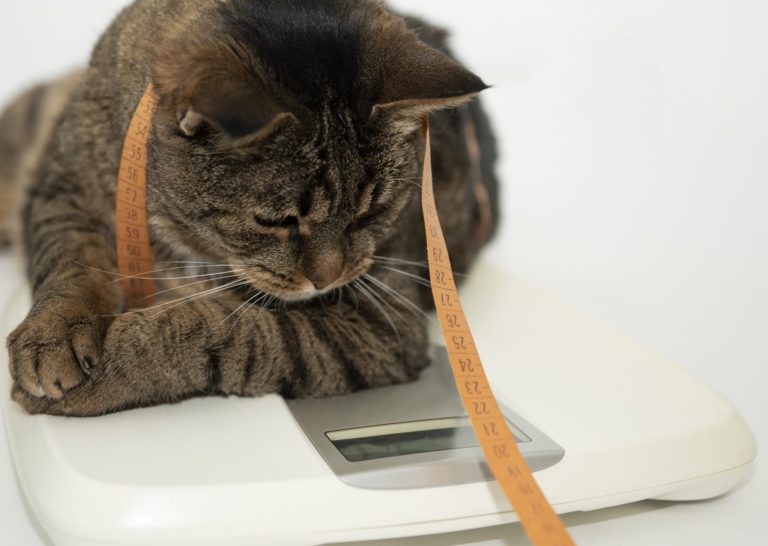
It is believed that around 1 in 3 dogs and 1 in 4 cats in the UK are overweight and numbers are growing. If left, what starts off as a little excess weight can easily lead to obesity. This brings with it some very serious health issues for your pet that could include diabetes, heart disease and cancer.
It is therefore really important to keep a close eye on your pet’s weight and if you think they may be overweight, address it straight away. This will help ensure that your pet enjoys a long, happy and healthy life.
How Do I Know If My Pet is Overweight?
There are several ways of establishing whether your pet is overweight.
My Pet is Overweight, What Should I Do?
Measure their portions – Double check that you are feeding your pet the correct portion size. Many owners often overfeed their pets so make sure that you follow the advice on the food packaging regarding size, age, and lifestyle. If your pet is on the chubby side, give them slightly less than the packet advises until they are back to a healthier size.
Move more – Increase the length of your dog’s walk or add another walk to your usual routine. Even a few more minutes playing in the park can help burn calories. If your dog has reached the point where they are struggling with a long walk due to their weight, take them for more frequent, shorter walks to burn calories.
It’s not just kittens that are playful, older cats can be also encouraged to play with an interesting new feather toy or laser pen. Even just a couple of 10–15 minute play sessions per day with your cat can really help with weight issues.
Manage the treats – Keep an eye on the type of treats your pet is given. Human food given as treats can cause your pet to pile on the pounds quickly, so make sure the whole family know not to. It’s much better to stick to those specifically designed for animals, remembering to limit the number given.
Don’t assume they are hungry – Even though they look like they are begging for your food, it doesn’t necessarily mean they want it. They may be after your attention so try a pat on the belly, a brush or scratch behind the ear instead of immediately giving tidbits.
Prescription Diets – Some overweight pets might need a little extra help to go along with their daily exercise. We offer a great range of prescriptions diets that are designed to help your pet lose weight without losing nutrients.
Just like humans, too much food and not enough exercise is not a good combination if we want our pets healthy, happy, and around for a long time. If you have questions or concerns over whether your pet is a healthy weight, please do get in touch. We offer weight loss clinics with a Veterinary Nurse who will organise regular weigh ins and measurements to track your pets weight loss and set new goals!
St Kitts Veterinary Centre: 01252 844044
Basingstoke Veterinary Centre: 01256 844944
Crookham Park Veterinary Centre: 01252 913990
Firgrove Veterinary Centre: 01252 877799
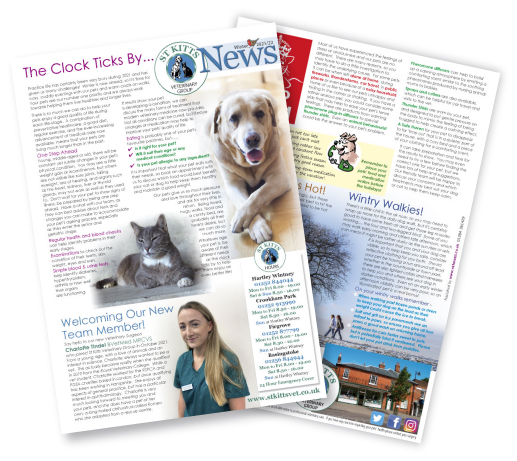
For all the latest practice news and health information, check out our newsletter with the link below!

Christmas is nearly here and it’s a busy and exciting time for many of us. For our pets though, the festive period can be fraught with potential dangers to their health and wellbeing.
The last thing anyone wants is an emergency trip to the vet at Christmas so reduce that risk by following the advice below and ensuring the whole family has a very merry Christmas.
They look and smell fantastic in our homes but the oils found in fur trees are mildly toxic to most pets and can cause a tummy upset if eaten. Tree needles can also easily become lodged in a paw or throat so make sure fallen needles are cleared up promptly and try to make sure pets aren’t left unsupervised near the tree.
Baubles can look just like toys to pets and they may decide that they want to play with them resulting in broken glass and potential damage to paws. Pets may chew plastic decorations or even eat them, which can often mean a visit to the vet. Rabbits, cats and dogs have all been known to chew through wires so make sure any cables are tucked away safely.
Chocolate – A Christmas staple that many pet owners already know is toxic to animals, chocolate should always be kept out of reach. Don’t forget to check that there are no confectionary gifts under the tree, that advent calendars are on a high shelf and any chocolate tree decorations are on the upper branches because they might well be sniffed out and devoured!
Mince Pies, Christmas Pudding and Christmas Cake – All these delicious seasonal desserts contain vast amounts of currants, raisins and sultanas which are highly toxic to dogs. Eating even a handful can cause vomiting and diarrhoea and in extreme cases even kidney failure.
Artificial Sweetener – Xylitol in particular is known to cause fatal hypoglycemia in pets. It’s found in many foods such as cakes and even a small amount can cause serious problems.
Nuts – Macadamia nuts in particular are highly toxic and can cause weakness and vomiting in pets if consumed.
Onions – Anything containing onions such as gravy can cause stomach irritation to your pet and may result in vomiting and diarrhoea.
Bones – Cooked bones can splinter into sharp shards that can easily get caught in a dog’s throat or bowel. Make sure the turkey carcass is inaccessible!
Alcohol – Even a small amount of alcohol can create levels of toxicity in a pet that can cause tremors, difficulty breathing and sometimes even death so keep drinks out of reach and clear up spills promptly.
Poinsettia, Mistletoe, Amaryllis and Holly are firm Christmas favourites but they do present a danger to a pet that likes to nibble on plants. With varying levels of toxicity, the side effects depend on how much of the plant is consumed. Display these plants well out of reach to avoid any tummy troubles.
Christmas usually means a busier than usual home, with friends and family coming together to celebrate. Unfamiliar people and more noise can be frightening for your pet so it’s a good idea to provide them with a safe room where they can escape and feel at ease if it all becomes too much. Pheromone diffusers are useful as they can help to calm animals and provide comfort in these circumstances.
It’s really important to maintain your pet’s normal routines over the festive period. Keep feeding them their usual food and taking them for regular exercise. Find non-food ways of involving them in the fun. A new toy and more attention can help to ensure that our pets remain happy and are able to enjoy the festive season too.
If you have any concerns regarding the health and wellbeing of your pet or any other questions or queries, please don’t hesitate to contact us.
St Kitts Veterinary Centre: 01252 844044
Basingstoke Veterinary Centre: 01256 844944
Crookham Park Veterinary Centre: 01252 913990
Firgrove Veterinary Centre: 01252 877799

Fireworks and pets sadly do not go well together and safeguarding your pets around Bonfire Night can be a difficult job. Fireworks often cause stress, anxiety and sometimes even aggression in pets. Keep reading for tips on preparing your home and pet for the upcoming fireworks season.
A 2018 report showed that around 40% of cat and dog owners reported that their pet is afraid of fireworks. It’s understandable that loud bangs and high pitched sounds can be scary for our pets but being prepared and with the right care, you can keep your pet calm and help them to cope.
If you know your pet becomes stressed and need some help, your vet can offer advice and may well prescribe calming medication such as Nutricalm. If you have a new pet or you aren’t sure, stressed pets can often exhibit the following behaviour:

Dogs:
Cats:
Rabbits:
1. Plug in a diffuser
Pheromone sprays and diffusers such as Feliway and Adaptil can help ease pet stress and anxiety. Buy these in advance of a firework event, ideally a couple of weeks. Placing one or two around the house.
2. Walk dogs early
Avoid evening or late night walks so your dog isn’t outside when the fireworks start. Even if they don’t normally show fear around fireworks, dogs can be easily startled by loud, unexpected bangs. Gradually alter your normal walking routine about a week before fireworks occasions to get your dog used to the change. Make sure you keep them on a lead.
3. Keep cats inside
If your cat is an outdoor cat, it may be worth trying to keep them in when they come home earlier in the day. Otherwise, there’s a chance they will still be out when the fireworks start and may become scared and anxious.
4. Create a safe space
Creating a safe space in your house gives your pet somewhere calm and familiar to retreat to when they get scared. Fill a room or corner with food and water bowls, their favourite toys and bedding to create a pet-friendly haven.
6. Close windows, curtains, and blinds
Keep your windows shut and close any curtains or blinds to soundproof your home and shut out bright flashes that can scare pets. Don’t forget to lock the cat flap to prevent your cat from going outside.
7. Turn up the radio or TV
Turning on the radio or TV not only helps mask the loud bangs and crackles of fireworks but also provides a familiar noise to help distract your pet. Play calming music or turn on a programme you watch regularly to help reassure your pet.
8. Consider bringing rabbit hutches indoors
Due to their sensitive nature, outdoor rabbits suffer the most when it comes to fireworks. One option is to bring their hutch inside during fireworks season. This could be in the house, garage, or shed and provides a solid barrier from the noise outside, helping to reduce their stress levels. If you’re unable to move them inside, lay a few thick blankets over their hutch to help muffle the bangs and keep them calm. Don’t forget to leave a suitable gap for ventilation.
9. Give rabbits extra bedding
Rabbits tend to burrow when they get scared, so adding some extra bedding into their hutch gives them plenty to hide in and helps them feel protected against the noise. You may also want to give them some extra hideaways, such as a cardboard box filled with hay, to ensure they have lots of opportunities to take refuge from the noise.
10. Stay at home
If at all possible, try to ensure that somebody is at home. This will help soothe your pet’s fears. Left on their own, pets could become very stressed and destructive in your absence. Keep talking to your pet and give them plenty of love and attention during the fireworks. Knowing you’re there to protect them will reassure them and keep them calm.
11. Give them a treat
A tasty treat can make a world of difference to your pet’s stress levels and it’ll also reward their good behaviour and bravery. A stuffed chew toy can keep dogs occupied for hours, while a treat puzzle ball can have the same effect on cats and rabbits. These stimulating toys help take their mind off what’s going on around them and can even help them forget their fears.
12. Make sure they’re microchipped
Spooked pets can run away, especially cats, so make sure they’re microchipped to make them easily identifiable. If your pet is already microchipped, make sure your contact details are up to date so you can be contacted straight away.
It is often dogs that are affected most severely by loud noises. In addition to the tips above, going through the process of desensitising your dog to loud noises can be a good, long-term solution.
There is lots of advice available on how to desensitise your dog but the most important part to understand is that the process needs to be gradual and often can take months.
The training needs to take place indoors and you will need access to sound effects such as fireworks, thunder or a vacuum cleaner. The training starts by playing the various sounds at a low volume, watching out for signs of stress in your dog.
The volume is then gradually increased until the dog becomes used to the noise at each level and doesn’t show any signs of anxiety. Sounds are played in this way daily, over a period of weeks until your dog no longer reacts – even at a high volume.
If your dog is still stressed by loud noises after trying these steps, you should contact your vet for further advice.
The morning after a nearby fireworks display, check your garden for any firework remnants fallout that may cause harm. Fireworks contain highly toxic ingredients that can be fatal to your pet if eaten, so remember to check your garden for debris and keep an eye out on your dog walks.
If you have any concerns over stress and anxiety in your pet, please contact us.
St Kitts Veterinary Centre: 01252 844044
Basingstoke Veterinary Centre: 01256 844944
Crookham Park Veterinary Centre: 01252 913990
Firgrove Veterinary Centre: 01252 877799

Just like us, as our pets age they can experience an increase in health problems. Regular check-ups are essential to ensure good health and become even more important as your pet ages because age-related diseases can be subtle and are often easy to miss.
While every animal is different, there are general guidelines to determine when a pet becomes a ‘senior citizen’. Cats are considered mature at 7 to 10 years, senior at 11 to 14 years and geriatric at 15 or older.
In dogs it differs according to their average lifespan. Small dogs that generally live longer, are considered senior citizens when they reach 11 years of age. Medium sized dogs become seniors at 10 years of age. Larger sized breeds are seniors at 8 years of age and the giant breeds are considered seniors at 7 years old.
Rabbits become ‘senior’ sometime between 5 and 8 years old.
Again, just like humans, lifestyle and genetics play a big part in the aging process of pets but there are things you can do to help ease your pet into their senior years.
Age Appropriate Diet
Diet plays a big role in maintaining your pets’ health throughout their life. As your pet ages though, they generally don’t have the same levels of energy as they used to, don’t burn as many calories and are therefore prone to weight gain so it’s important that their diet is revised.
Overweight and obese animals are at increased risk of developing disease. Extra weight also puts unnecessary pressure on ageing joints. Feeding your pet food that is specifically designed for those in their senior years is therefore recommended. These are often lower in fat and calories and will complement the nutritional needs of your pet.
Exercise
Age can cause deterioration in a pet’s joints and muscles. A run around the park might become a walk around the block for dogs and you might find your cat is sleeping more and climbing trees less.
It may be that your pet starts to suffer from arthritis. Pets who struggle to run and jump like they used to may be in pain. Even things like getting onto the sofa can become tricky for older pets but treatments are available to help them regain some of their mobility.
Older pets will benefit from exercise – just at a gentler pace. For dogs, two or three short walks a day can be more beneficial than one long walk.
Be Patient
Keep an eye out for changes in your pets’ behaviour. They may become disorientated, sleep more in the day, wake in the night and might lose interest in interacting with people. These are all a normal part of the ageing process and it’s important that your pet still feels loved as it can be a challenging time for them.
Extra TLC
As your pet ages, physical contact is more important than ever. Pets that have difficulty grooming themselves will love an additional brush and all pets will benefit from lots of love and fuss.
Even older pets still enjoy toys! ‘Puzzle’ toys can provide welcome stimulation for a senior pet if they aren’t interested in anything more physical.
Orthopaedic beds, with or without a heating element, can keep your pet really comfortable especially in colder weather. The comfort a soft bed provides can be really soothing for tired joints.
With proper nutrition, regular vet check-ups and a little extra tender loving care, there’s no reason why your older pet shouldn’t stay happy and healthy throughout their later years.
If you have any concerns regarding your senior pets’ health or any other questions or queries, please don’t hesitate to contact us.
St Kitts Veterinary Centre: 01252 844044
Basingstoke Veterinary Centre: 01256 844944
Crookham Park Veterinary Centre: 01252 913990
Firgrove Veterinary Centre: 01252 877799

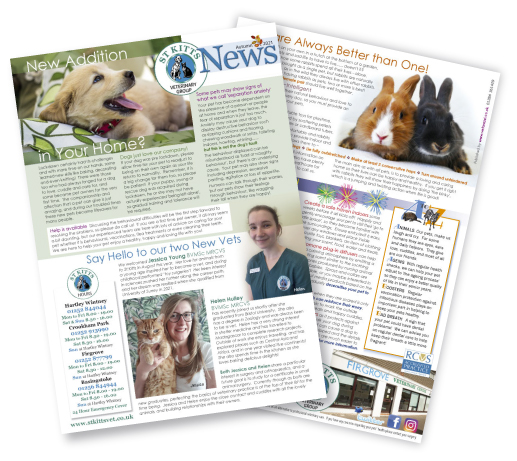
For all the latest practice news and health information, check out our newsletter with the link below!
